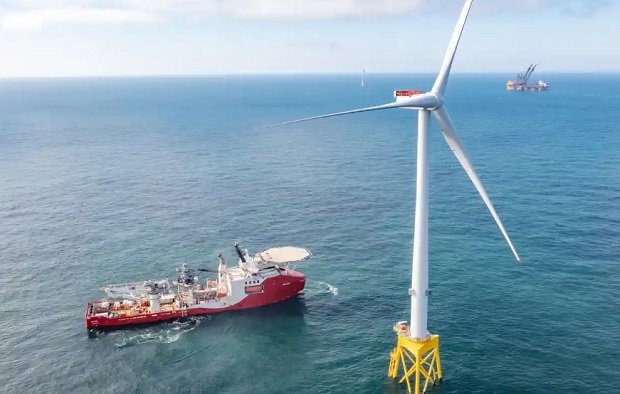The Structure and Construction of an Offshore Wind Turbine

In the quest for sustainable and renewable energy sources, offshore wind farms have emerged as a promising solution. These majestic structures rise from the sea, gracefully capturing the powerful winds that sweep across the ocean. In this article, we will explore the intricate design and construction of an offshore wind turbine, delving into the engineering marvel that makes these towering giants generate clean and reliable electricity.
The Structure of an Offshore Wind Turbine
Foundation
The foundation of an offshore wind turbine is the crucial anchor that supports the entire structure. Due to the challenging marine environment and varying seabed conditions, different types of foundations are used. The most common are monopile, jacket, and floating foundations.
Monopile
This is a single steel tube driven deep into the seabed, resembling a giant pole. It is suitable for shallow water and relatively stable seabeds.
Jacket: Jacket foundations consist of steel lattice structures with multiple legs, offering stability in deeper waters and more challenging seabed conditions.
Floating
Floating foundations are used in deep waters, where it is not feasible to install fixed foundations. These platforms float on the water’s surface, tethered to the seabed by mooring lines.
Tower
Rising from the foundation, the tower is the vertical structure that supports the nacelle and rotor. It is typically made of steel and designed to withstand the harsh offshore conditions, including strong winds and corrosive saltwater.
Nacelle
The nacelle houses the critical components of the wind turbine, including the gearbox, generator, and control systems. It is positioned at the top of the tower to capture the wind’s full force and optimize energy production.
Rotor
The rotor consists of two or more blades attached to a hub, which is connected to the main shaft inside the nacelle. As the wind blows, the rotor spins, converting the wind’s kinetic energy into mechanical energy.
Blades
Offshore wind turbine blades are massive, typically ranging from 60 to 80 meters in length. These aerodynamic structures are made from advanced composite materials, engineered to withstand the immense forces of wind while maximizing energy capture.
The Construction of an Offshore Wind Turbine
Site Survey
Before construction commences, a thorough site survey is conducted to assess the seabed conditions, wind resources, and environmental impact. This data informs the design and selection of the appropriate foundation type.
Foundation Installation
The foundation installation is a critical and challenging stage of offshore wind turbine construction. For monopile foundations, specialized vessels drive the steel piles deep into the seabed. Jacket foundations are assembled onshore and transported to the site for installation. Floating foundations are towed to the location and ballasted with water or sand to submerge them in a stable position.
Tower Erection
Once the foundation is in place, the tower segments are transported to the site and assembled. The completed tower is then lifted into position using heavy lift vessels or specialized crane ships.
Nacelle and Rotor Installation
The nacelle, containing the generator and other components, is lifted to the top of the tower using a large crane. The rotor blades are transported to the site and attached to the hub at ground level or using specialized climbing techniques.
Testing and Commissioning
After the installation of the turbine components, thorough testing and commissioning are conducted to ensure the wind turbine operates optimally and safely. Various performance and safety checks are carried out before connecting the turbine to the power grid.
Challenges in Offshore Wind Turbine Construction
Constructing offshore wind turbines presents unique challenges compared to onshore wind farms:
Harsh Environment
Offshore wind turbines endure more extreme weather conditions, including strong winds, waves, and corrosive saltwater. This requires robust construction materials and design to withstand these elements.
Logistics
Transporting and installing the massive components of offshore wind turbines at sea demands intricate logistics and specialized vessels.
Maintenance
Accessing and maintaining offshore wind turbines can be challenging and costly due to their remote locations and the need for specialized maintenance vessels.
Conclusion
Offshore wind turbines are engineering marvels that harness the power of the wind to produce clean and sustainable electricity. From the foundation beneath the seabed to the towering blades reaching towards the sky, every component plays a crucial role in capturing nature’s energy and converting it into usable power. As technology advances and experience grows, offshore wind farms will continue to play a pivotal role in meeting the world’s growing demand for renewable energy while contributing to a greener and more sustainable future.



